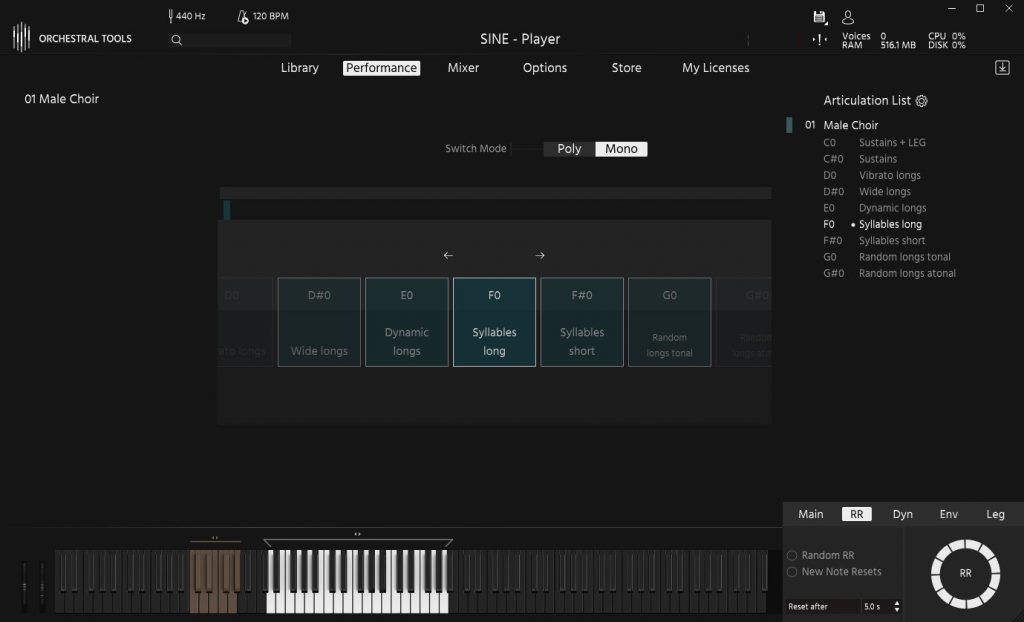Today we will be checking out Tallinn – Baltic Voices and Strings, an exciting new addition to Orchestral Tools’ broad catalog of sample libraries. Recorded in St. Nicholas church in Estonia’s capital (hence the name), this library aims to provide inspiring samples that cover a minimalist and “Nordic” musical approach, reminiscent of iconic composer Arvo Pärt’s works. Let’s find out together how well Tallinn is able to succeed and if it can possibly achieve even a bit more.
We were kindly provided with a review copy by Orchestral Tools.
OVERVIEW
Tallinn features three main sections: the Tallinn Chamber Orchestra (strings), the Estonian Philharmonic Chamber Choir ensemble, and two different pipe organs. The string ensemble consists of 5 violins, 4 violas, 3 celli, and 2 double basses. The choir ensemble consists of 8 female and 8 male singers. The church and choir organs have been sampled with various stop combinations and registers.

The different sections have been recorded in situ (at their respective place in an orchestral seating), in two dynamic layers for the strings and choir and one for the organs. The library features up to 7 microphone positions for some of the sections. The full installation of Tallinn occupies 43 GB of hard drive space.
Here is a quick overview of the patches included for the string section:
- Different types of Sustains, including soft and immediate attacks, and true legato
- 2 types of Portatos (Long and Short)
- Staccatos
- Tremolos
- Harmonic Sustains and Portatos
- Dynamic waves (evolving longs)
And the patches included for the choir section:
- Different types of Sustains
- Syllables (Long and Short)
- Random Longs
As for the two organs, they have numerous patches covering different playing tones and timbres.
SINE PLAYER
Tallinn is a sample library exclusively designed for Orchestral Tools’ very own SINE player. As with all the previous SINE releases, this gives Orchestral Tools the ability to present a customized working environment and to offer instruments for purchase separately. This is a huge advantage for composers wanting to stagger their purchases over time, or are only interested in one particular instrument section.
The SINE player offers the same control features for Tallinn as it does with other SINE libraries, including the possibility to activate legato for any articulation, the control over round robins, and to apply ADSR envelope settings. Those who have worked with any SINE library before will feel find their way around pretty much instantly.
The installation itself is straightforward and consists of activating the purchase, navigating to the ‘My Licenses’ tab, and either downloading the complete library or just desired sections and microphone positions à la carte. This leaves the users in control of how much hard drive space they want to dedicate to the library.

HOW DOES TALLINN SOUND?
During our extensive testing sessions, it quickly became apparent that Tallinn has clearly been designed for slower, evocative music. The articulation list is pretty much dominated by a vast selection of different types of longs and sustains, many of which were recorded with subtle dynamics.
The Strings
Let us have a more detailed look at the string section for example: here we’re offered a nice selection of sustains that are mostly sampled over 2 dynamic layers : p and mf. In order to stay within the somber, “Nordic” theme of the library, the players were instructed to perform with almost no vibrato. One can immediately notice that in the strings’ various long articulations.
The sustains are well recorded with a good amount of noticeable “rosin” detail, even on the p dynamic layer, which gives the strings a very “airy” kind of sound. The legato transitions are of moderate length and catered more towards slower tempos. For reference, they are quite close in nature to those of Berlin Symphonic String’s “melodic legato” patches.
We did notice a few odd transitions for some of the intervals in the p layer. They sounded like a third note was being played very briefly. However, they will be hard to spot in the context of a full string ensemble passage.
The fragile longs, recorded at a piano (p) dynamic, are truly among our favorite patches. They would work superbly as an underscore to any modern drama series. Just one drop of bitterness: This beautiful playing technique is available for the violas and celli only. We hope that – at some point in the future – Orchestral Tools will add a Fragile Longs articulation for the violins as well.

In addition to the standard sustains, Tallinn also offers several types of evolving longs. Some of which feature single bowings, or “dynamic waves” (think of slow crescendo-decrescendo arcs). The generous choice of longs makes it easy to perform believable phrases, especially since they alternate between different types of attacks and swells instead of relying on a single sustain/legato articulation. These evolving longs are a bit reminiscent of Orchestral Tools’ Time Macro library and are really useful to add subtle movement to tracks. They fit really well with underscores and minimalist tracks that feature intricate textures and slow motifs.
Tallinn also includes some short articulations, albeit in a more limited manner: users are given the choice between portato shorts (2 RR) and staccatos (4 RR). Even if we would have appreciated seeing some spiccatos added to the list for more variety while writing, this is not a major drawback and is in line with the library’s intent.
The Choir
Moving on to the choir sections, here again, the articulation list is mostly dominated by different types of long playing styles. The sustains feature impressive detail and clarity and resonate very well in the Tallinn-based recording location. As expected, the choir’s legato transitions are a perfect fit for intricate choral works.
The standard sustains are recorded as a rather neutral “Oooh” vowel, with an additional “Mmh” vowel for the female choir. For more creative flexibility, Orchestral Tools also included different syllables (12 for longs, 8 for shorts). There is no direct control over these syllables, however, it is possible to isolate them by activating/deactivating the associated Round Robin (one RR being one distinct syllable).

The Organs
Last but not least, the two organs feature a surprising number of patches, especially when taking into account that Orchestral Tools implied that they were not the initial focus of this library. As it turns out, the organs really stand out on their own!
They feature numerous stops and divisions and as such, are able to provide very varied textures, almost like a synth. Our favorites are the Waldflöte 2″ patch for its fragile flute-like tones, the Tutti patch for its “Interstellar”-type of vibe, the Holzflöte 8″ for its organic sub-bass feel, and the Volles Werk for its raw power.
MICROPHONE MIXES
Tallinn features up to 7 microphone positions which is of crucial importance in a place as reverberant as St. Nicholas church. The string section features the usual Orchestral Tools setup: Spot, AB, Tree and Surround mic positions. There is a choice between cardioid and omni microphones for the AB and Tree positions. The variations mostly differ in the amount of natural room reverb they captured.
Speaking of which, the beautiful church ambience is present in all microphone positions. Even the close-mic’ed Spot mics have a wonderfully lush tail. As usual, we liked adding a certain amount of AB mic signal to achieve a wider image and to include more reverberance to the samples. The Surround mic is also very useful for TV and cinematic works since it pushes the sound of the instruments to the sides and away from the center part of the stereo image where the dialog would sit.

The choir section includes all of the previously mentioned microphones as well as an additional one: the Close AB which is placed between the Spot and the Tree mics. As such, it offers a good compromise between definition and ambience.
The organs feature 4 microphones in total: Spot LR, Spot LLRR, AB, and Surround. The AB mic represents once again a good balance between definition and room ambience. The Spot LLRR mic setup is an interesting option for adding detail without getting an overwhelmingly close sound as it gives a subdued rendition of the standard Spot mic.
CONCLUSION
In line with its very distinct recording location, Tallinn seems to be oriented towards a certain type of music, one that is slow, ethereal, nordic, sometimes noir, but always evocative. In this regard, the library totally delivers on what it aims to achieve: a Scandinavian drama-type of sound.
Tallinn is a superb addition to any media composer’s template since it is the kind of library that goes beyond its technical constraints by making perfect use of the inspiration it can bring. Musicians who are looking for vivid, breathing samples will indeed find a lot of life and movement in the recordings.
Finally and as always with SINE, the ability to purchase instruments separately is particularly welcome, especially since the library covers three very different sections.
Pros
- Beautiful, inspiring samples
- Stunning hall ambience
- Generous selection of long articulations
Cons
- A few odd legato transitions for certian intervals
- No interface control over the choir’s syllables
RECOMMENDED: 9/10
Tallinn is available through both the SINE Player store and Orchestral Tools’ online store for €399.


0 comments on “Orchestral Tools – Tallinn (Review)”